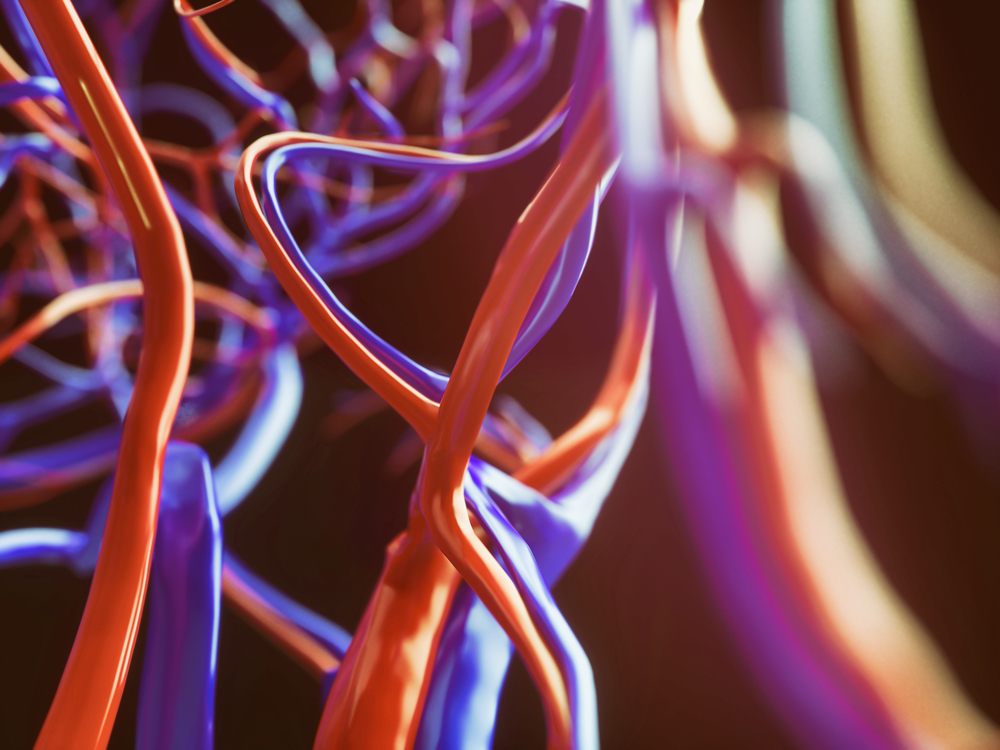Ofev Corrects Blood Vessel Abnormalities Associated with Lung Fibrosis, Study Suggests

Ofev (nintedanib) can counter lung fibrosis by correcting abnormalities in lung blood-vessel structure, according to a German study in mice.
The research suggests that fibrosis, or tissue scarring, and mechanisms involved in blood vessel formation interact in the progression of the disease.
Researchers at the Johannes Gutenberg University Medical Center in Mainz studied the tiny blood vessels that are involved in absorbing oxygen from the lungs. They noticed that with pulmonary fibrosis they took on a chaotic appearance that resembled that seen in tumors.
Ofev, an approved therapy developed by Boehringer Ingelheim, normalized the abnormalities.
This type of insight is crucial to the development of even better drugs for treating lung fibrosis, the researchers said.
Their study, “Effects of nintedanib on the microvascular architecture in a lung fibrosis model,” was published in the journal Angiogenesis.
To better understand how blood vessel formation correlates with the progression of pulmonary fibrosis, the team first exposed mice to the fibrosis-causing chemical bleomycin. When fibrosis started developing, they gave some of the animals Ofev.
By staining tissue with special dyes, or making casts of blood vessel networks, the researchers noted that blood vessels were denser than normal in fibrotic areas.
In a healthy lung, tiny blood vessels surround the air sacs, or alveoli, in a neat network that forms a basket-like structure. But in mice exposed to bleomycin, the networks grew in a disorganized manner. Blood vessels were twisted and winding, with many dead ends. They were also larger than normal. And they had irregular diameters.
Ofev normalized the vessel structures. In addition, it led to a 63 percent decrease in the growth of cells linked to fibrosis. That was particularly true of inflammatory cells, such as lymphocytes and monocytes, the team said.
Unsurprisingly, Ofev reduced inflammation and tissue density, indicating there was less fibrosis.
Another finding was that Ofev reduced the levels of several molecular factors linked to fibrosis development.
Mice with lung fibrosis produced excessive amounts of proteins known as collagen. Like the blood vessels, the collagen networks in the mice were highly unorganized, with fibers running in all directions.
The collagen assemblies were surrounded by the abnormal blood vessel networks and lots of inflammatory cells, the team said. Ofev lowered the collagen accumulation that is typical of lung fibrosis, they said.
The study showed that blood vessel changes are an integral part of the complex interactions leading to fibrosis development. It also showed that Ofev “significantly reduced lung fibrosis and vascular proliferation, normalized the distorted microvascular architecture, and was associated with a trend toward improvement in lung function and inflammation.” the researchers wrote.
These “findings uncover a potential new mode of action of nintedanib [Ofev] that may contribute to its efficacy in idiopathic pulmonary fibrosis.” the team concluded.







